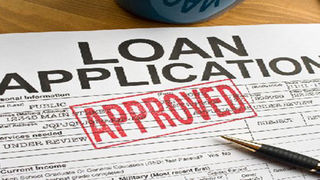
After reading about the high rates being offered by the Central Bank of Kenya (CBK) for Treasury Bills, Dan Ngimwa wants to know whether it would be wise to take a loan from his sacco and invest the money in T-Bills.
|Finance and Markets
Premium
Kenya to seek Sh97 billion more in external loans
Kenya will look outside its borders for additional borrowing next year to plug the budget deficit in what will be a pivotal first 12 months for the new administration following the August 9 General Election.
The 2021 Budget Review and Outlook Paper submitted to Parliament by the Treasury last month shows the government is set to increase external borrowing by Sh97 billion to plug the budget deficit for the financial year 2022/23, which begins just a month before the elections.
The increase will see loans taken from external creditors rise to Sh367.8 billion next year, up from Sh271.2 billion that will be borrowed from foreign lenders this year.
Kenya recently ramped up its uptake of foreign loans, taking Sh293 billion fresh loans from external lenders between April and August to retire part of its maturing debt and fund infrastructure projects.
Meanwhile, the end of Kenya’s temporary debt relief through the Debt Service Suspension Initiative (DSS), which lowered its external public and publicly guaranteed (PPG) debt service to revenue ratio to 13 per cent in financial year 2020/21, is set to increase debt repayment obligations in the financial year 2022/23.
Thus, the external PPG debt service to revenue ratio will increase to 15.8 per cent, dangerously close to the 18 per cent International Monetary Fund (IMF) threshold. This means that for every Sh100 that the taxman will collect, Sh15.8 will go to external lenders.
However, Kenya will cut domestic borrowing by Sh250 billion as the government seeks to cut reliance on borrowing from local markets to finance the budget in a move that will ease credit flow to individuals and businesses.
The government will borrow Sh408.1 billion from domestic lenders in the new year, down from the Sh658.5 billion that will be borrowed this year to free funds for lending to local borrowers, which will see the overall budget deficit fall to Sh775 billion from Sh930 billion.
Treasury says the government will put a stop to new projects, restructure those funded by external loans to prioritise only those that are key, and cut on non-priority spending, and adoption of new policies in an aggressive revenue mobilisation plan.
“The government will continue with its policy on expenditure prioritisation, implementation of cost-cutting measures, including parastatal reforms and alignment of resources to programmes under the Big Four Agenda and those supporting the Economic Recovery Strategy. The fiscal policy will also focus on activities aimed at ensuring successful conduct of the 2022 General Election,” Treasury said.
At the same time, Treasury remains bullish about revenue growth for the new financial year, betting on numerous tax reforms to increase revenue collection by 20.6 per cent.
Treasury has projected the taxman to collect ordinary revenue of Sh2.14 trillion in FY 2022/23, a Sh366 billion increase from the Sh1.77 trillion that the Kenya Revenue Authority (KRA) expects to collect this year.
“This revenue performance will be underpinned by the ongoing reforms in tax policy and revenue administration and boosted by economic recovery occasioned by implementation of priority programmes under the Economic Recovery Strategy, the Big Four Agenda and other priority programmes outlined in MTP (Medium Term Plan) III of Vision 2030,” Treasury said.
Treasury data shows the exchequer has repaid Sh238.9 billion of Kenya’s public debt repayment obligations for this financial year in the three months to October, out of Sh1.17 trillion that will be repaid before the end of the financial year.
During this three-month period, the government borrowed Sh306.8 billion from local lenders and Sh7.7 billion from external creditors, pacing towards attainment of the Sh930 billion borrowing target for the current fiscal year.
Treasury aims to conclude budget reading and passage of the Appropriation and Finance Bills by end of March, in an accelerated budget timeline before members of Parliament fully train their focus on the elections.





